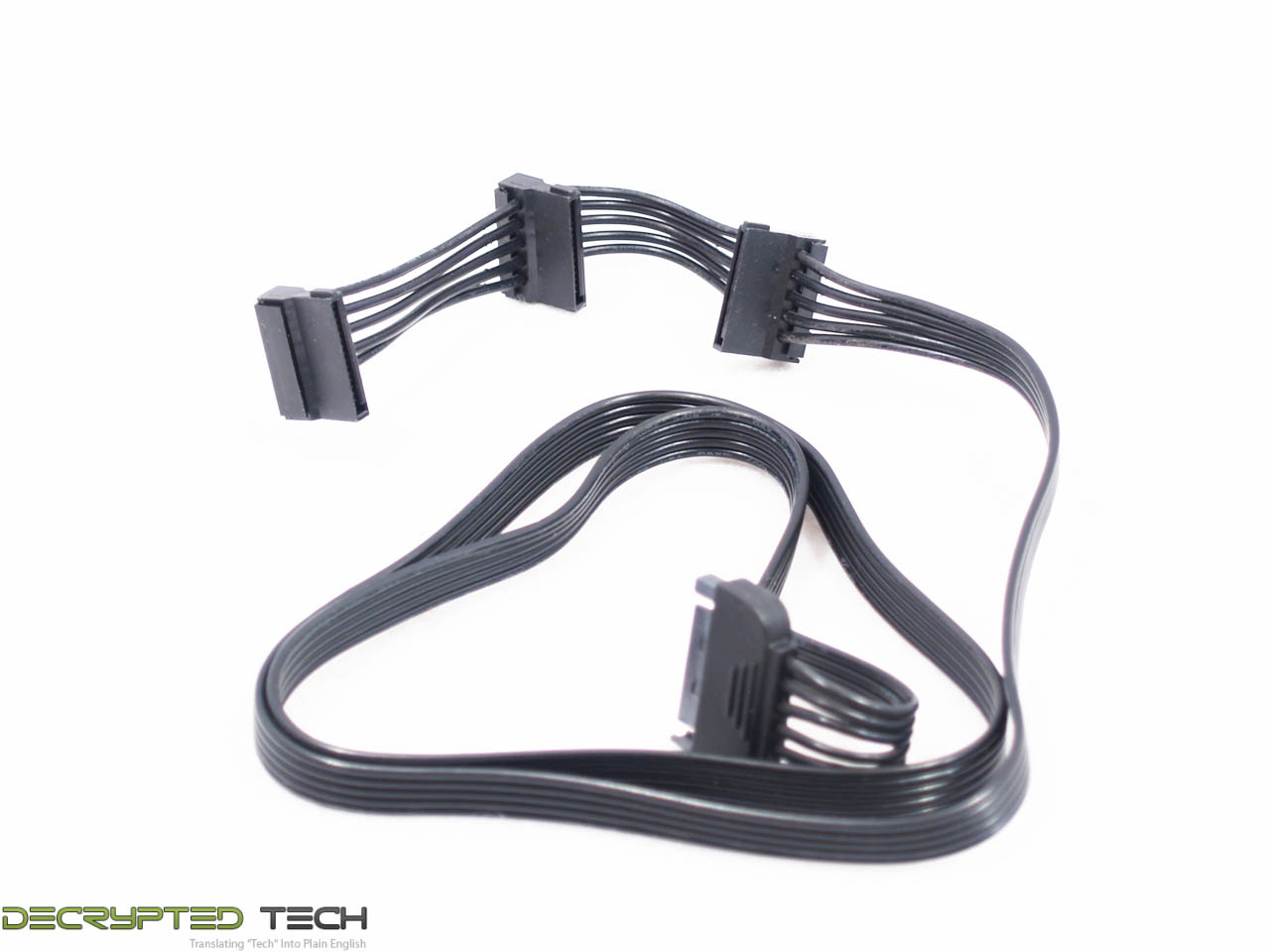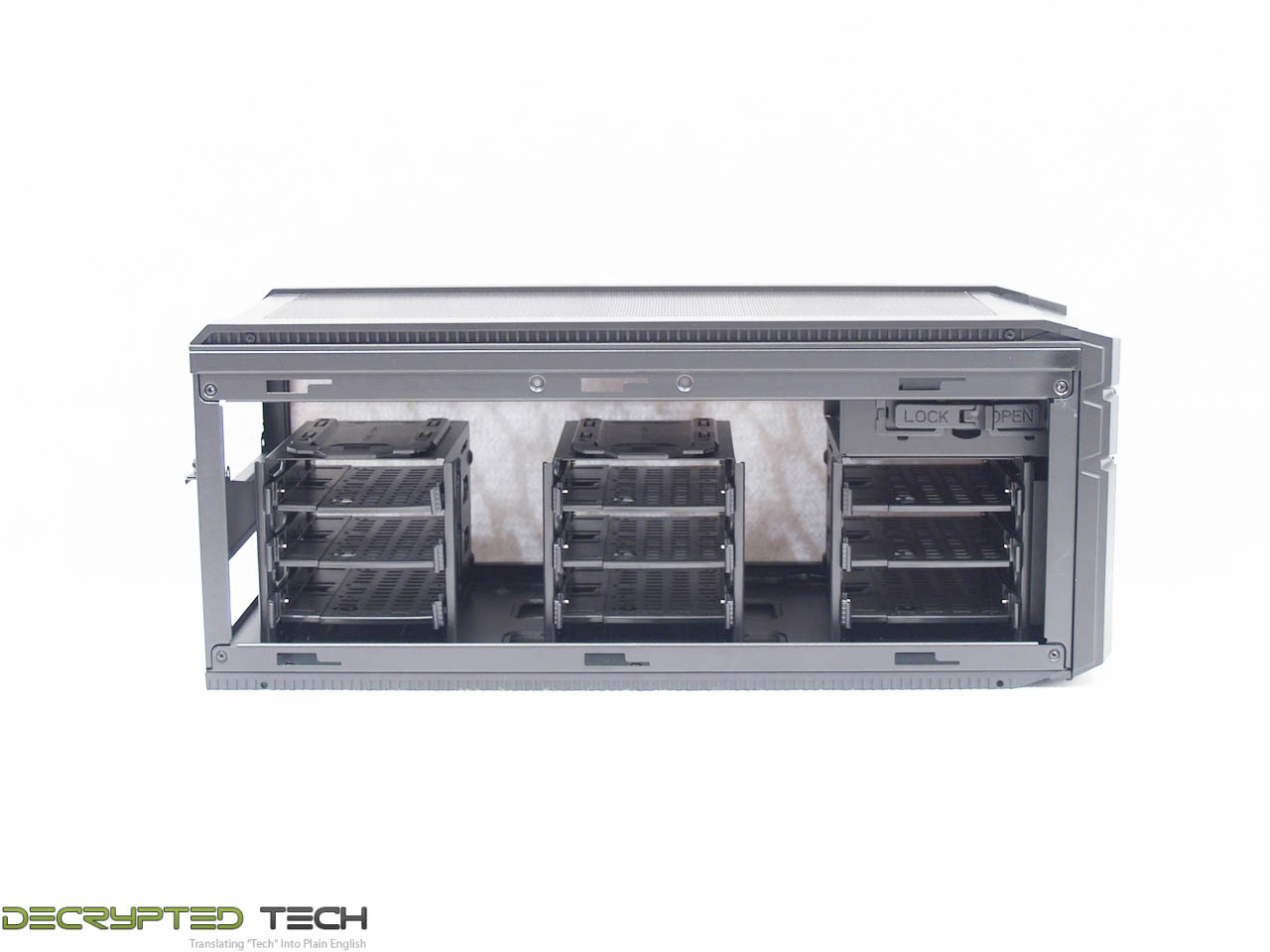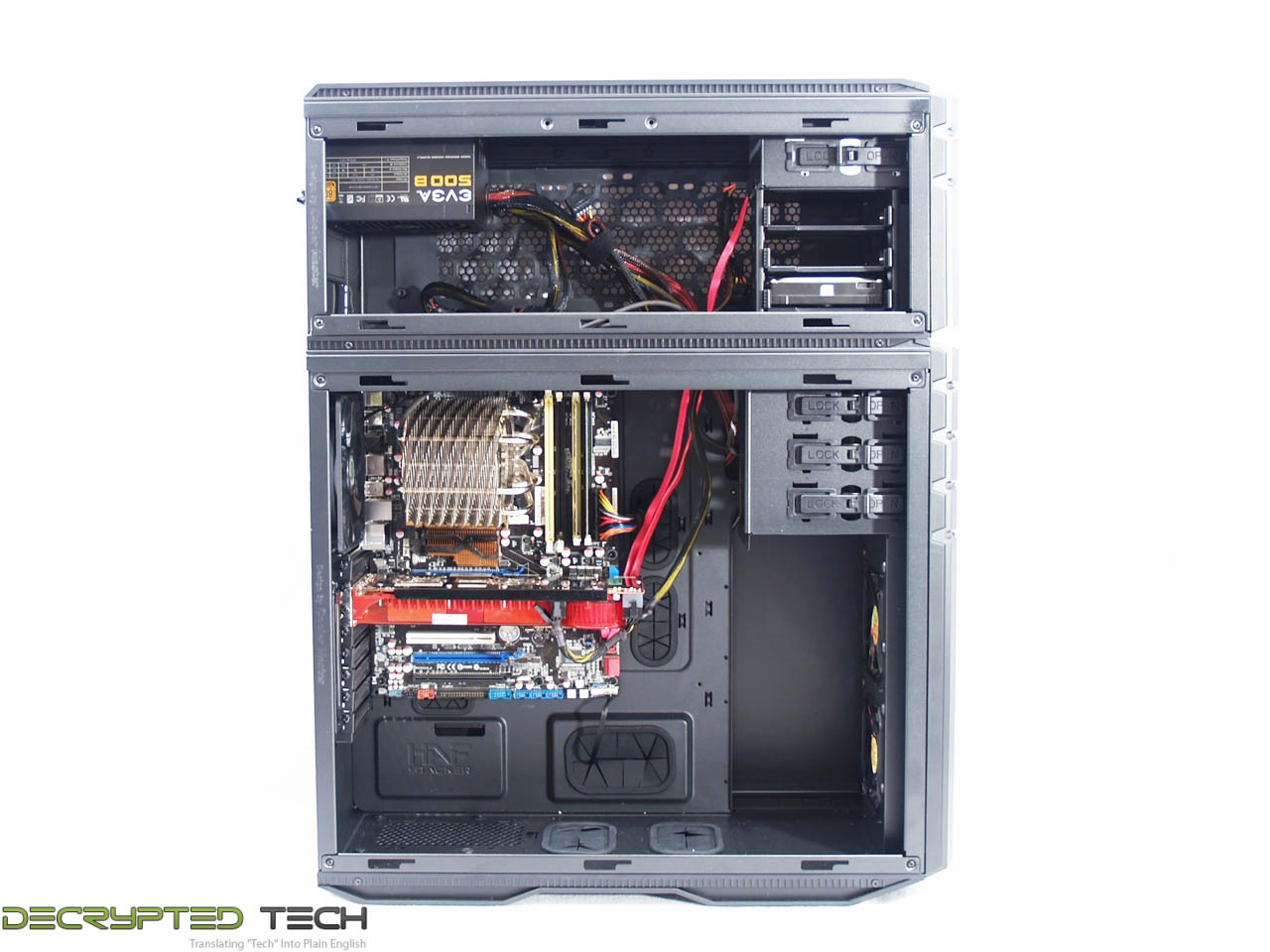Versatility –
The HAF Stacker 935 is billed as the world’s first “mod-tower”. After some time with the product, I have to say that’s accurate. The possible combinations and uses for the 935 even as it comes out of the box are many and varied.
The 915R can be mounted on top of the main unit or underneath, allowing the user a choice of mounting locations for the PSU in a single-system setup.
It can serve as housing for a second mini-ITX system, to act as a media server, a second gaming system, a folding machine, a Steam box, whatever the builder wants without taking up a single additional inch of floor or desk space.
Without a PSU or mainboard in place, the 915R can house up to nine 3.5-inch or 2.5-inch hard drives, freeing up valuable real estate in the main unit.
Without any of these in place the 915R can serve as a cooling module, housing up to two 360mm radiators and their associated fans. Even with the drive bays in place, the larger cutout in the bottom of the 915R is large enough to fit the pump/block combo unit on most all-in-one water-cooling systems and will support 240mm radiators with room to spare.
To recap the items in this system that can be easily altered, moved or removed to customize the build to the user:
All of the drive bays in both units are identical, and all are easily removable with a few screws.
The 3.5-inch external drive bay in the 915R is easily removable.
The power and I/O panel that comes mounted on the main unit is easily movable to the 915R.
Ease of build –
For this build I used an older Asus full-ATX motherboard, a huge ATI 3870X2 video card, one 3.5-inch hard drive, one EVGA non-modular PSU, and one Kingston 2.5-inch SSD. Two different configurations were made, one with a top-mount PSU and a large air cooler, and one with a bottom-mount PSU and a 120mm all-in-one water cooling system.
All in all the build went very well, with the HAF Stacker providing plenty of space for all of the hardware and plenty of holes and mounting points for cable management. Also of use was the vast array of hardware that came with the system:
 |
 |
Included with the 935 system are numerous mounting screws, standoffs, grommets and wire ties, as well as a blank I/O shield and a cover plate for whichever PSU opening is not being used. I had some difficulty with data cables reaching their intended locations, but thanks to this little gem provided with the system, power was not a problem:
What was *not* included with the system was a manual. The only documentation in the box was a short flyer on “how to stack”. How to stack the units isn’t going to matter if the space inside isn’t utilized to the best potential. A manual is a must in any case, but especially with a product as varied as this one.
Nevertheless the build was completed.
Top-mount PSU with air cooling, note the lower drive bays have been removed and two 120mm fans installed in the front panel for air flow.
Bottom-mount PSU with all-in-one water cooling system. The bottom drive bay was reinstalled and one fan removed. The radiator on the cooler is crooked but at the risk of damage, I refused to straighten it further. I blame that on the very stiff tubing used on this first-generation H50, no fault of the case here.
Overall I enjoyed this build and will likely be putting another system in it with a lot more complication to take advantage of the system’s versatility.
Aesthetics –
This, of course, is subjective, so I have to report for myself only: I like the look of the HAF Stacker 935 very much. The side window is absolutely beautiful and the mesh is aggressive without looking garish. Along with the simple all-satin-black finish I call this one a win.






